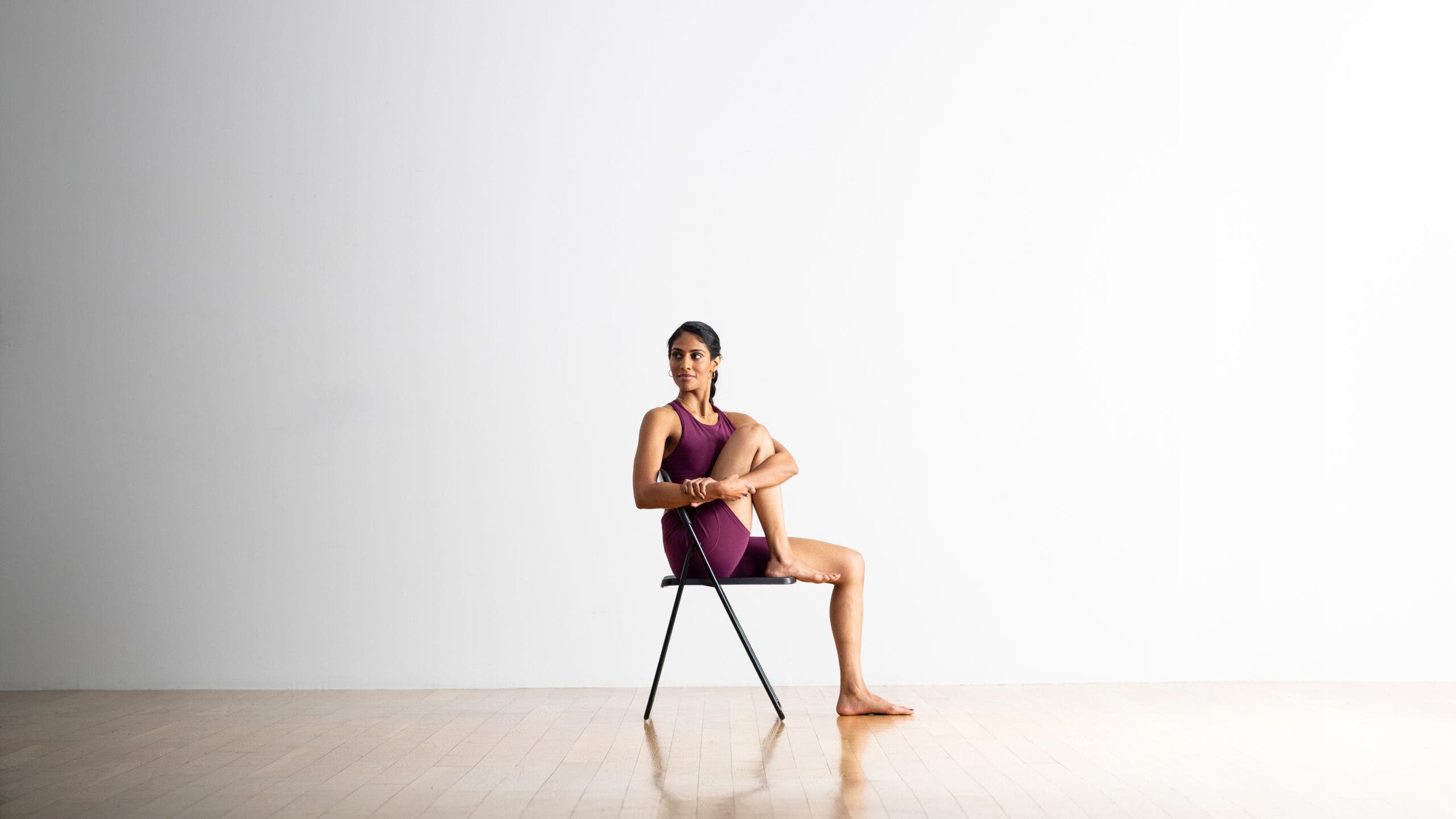Rope Pose

(Photo: Andrew Clark; Clothing: Calia)
It’s easy to be intimidated by the challenge that Rope Pose presents. Instead, think of Pasasana as cultivating and harnessing your power. After all, in this shape you create a strong bond that requires core engagement, spinal mobility, shoulder flexibility and lower leg and ankle strength. Consider the ring around your body a circle of confidence and protection, as if you’re lassoing and cultivating all your strongest qualities.
And if most people never get into the full expression of this pose? That’s OK. It’s a journey. So whether you nail Rope or simply work toward it, you will become stronger and more flexible each time you try. It is the process of trying that counts.
Sanskrit
Pasasana (posh-AHS-anna)
Rope Pose: Step-by-step instructions
- Stand in Tadasana (Mountain Pose). Bend your knees into a full squat with your toes touching, your heels slightly apart, and your seat resting on your heels.
- Draw your knees slightly to the left. As you exhale, turn your torso to the right. Close any space between the left side of your torso and the tops of your thighs. Bring the back of your left arm and shoulder toward the outside of your right knee.
- Press your right knee and your left arm and shoulder firmly against each other. Use this pressure to lengthen the left side of your torso, sliding it along the tops of your thighs.
- Reach your right arm behind your back, bend your elbow, and clasp your right wrist with your left hand.
- To come out of the pose, exhale and release the twist. Repeat on the other side.
Variations
Rope Pose with a Blanket Under Heels

Come into a low squat with your feet apart and your knees wide. If your heels don’t rest on the floor, slide a partially or fully rolled blanket underneath them. Bring your right arm behind your back, and your left arm to the outside of your left thigh as if you were trying to touch your hands. Gently twist your upper body to the right as you lengthen through the spine. Stay for several deep breaths. Repeat on the other side.
Rope Pose in a chair

Sit in a chair with a back that you can easily reach over. Lift your right leg and place your foot on the seat of the chair. Then twist to the right, looping your left hand or elbow around your knee. Anchor your right elbow over the back of the chair and grasp your left hand or elbow to create a bind.
Rope Pose basics
Other names: Commonly referred to as Noose Pose (Read why YJ editors changed their interpretation of the name).
Pose type: Twist
Targets: Full body
Pose benefits: This twist strengthens your core and thighs. It also stretches your shoulders, back, quadriceps, and ankles.
Beginner’s tip
Many students of yoga—beginners as well as experienced—aren’t able to move into this pose due to tightness in the shoulders. If you struggle to come into this squat, try a modified variation shown below or simply squat, bring your hands together at your chest and twist first to one side, then the other.
Preparatory poses
Ardha Matsyendrasana (Half Lord of the Fishes Pose)
Balasana (Child’s Pose)
Virabhadrasana II (Warrior 2 Pose)
Anjaneyasana (Low Lunge)
Utthita Parsvakonasana (Extended Side Angle Pose) With a Bind
Counter poses
Adho Mukha Svanasana (Downward-Facing Dog)
Paschimottanasana (Seated Forward Bend)